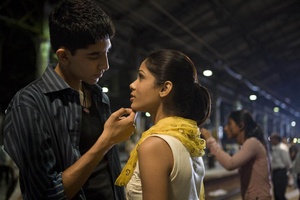Luke Skywalker has nothing on Ender Wiggin.
A decade after the debut of the Jedi, “Ender’s Game” by Orson Scott Card, winner of the 1985 Nebula Award for best sci-fi novel, sparked controversy and intrigue in the science fiction realm of literature.
The first movie adaptation of the novel hits theaters Nov. 1. Battle simulations in zero-gravity, deep-space exploration and questioning the laws of morality are all told in this gripping story arch.
But for Ender, his world is less of a fantasy adventure and more of an emotional burden.
In this universe, Earth has endured two invasions by a bug-like alien force, also known as “buggers,” which tried to destroy humankind. The nations come together to fight for humanity’s survival, dismissing the dark nature of war and proving the impact of war was a lesson to their advantage. This perceptive insight on the part war plays in tainting the human character kept me captivated to read on.
A third bugger invasion becomes imminent, and Earth begins recruiting for the next generation of space commanders. They look for children to train young—very young.
Meet Ender Wiggin, an adorable 6-year-old boy with astonishing intelligence well beyond his years. I became immediately attached to the young outcast who is shunned by society for being known as a “third” (third-born children are discouraged under government population regulations). Ender is also used to being excluded because he’s much more intelligent than his peers.
When he’s recruited to International Fleet Battle School, where brilliant children are trained in military strategy and tactics, Ender is immediately isolated, ridiculed and bullied—not much different from his life on Earth.
Although exceptionally brilliant, the children chosen for battle school are also brutal. Earth’s fate and annihilation of the buggers depends on these kids. It’s borderline terrifying to see how their innocence is taken from them as they are pushed to take ruthless measures (like threatening to murder Ender in his sleep) to succeed in battle school.
The lengths humanity goes through to protect itself in “Ender’s Game” raises alluring questions about humanity’s true nature. Would we really risk everything by putting the fate of Earth in our children’s hands knowing its consequences would turn them devastatingly cruel?
Card depicts Ender as one of the most mosaic young characters in literature. Ender is very much a representative of all that is good. He is filled with sorrow for any destruction he causes and wishes no ill to any other creature.
By the end of the book, Ender’s sacrifices become almost too devastating to handle. People, fictional or non-fictional, are rarely as empathetic as Ender. It’s easy to relate to sacrificing your life for your family, but putting everything on the line for the human race? That’s something I, and probably many others, would be incapable of doing in Ender’s place.
We may often ask ourselves what it means to be human. Ender himself is under constant internal debate about humanity’s decisions and how his freedom to choose his destiny was destroyed as a boy. It’s an uncomfortable but remarkable experience to be inside Ender’s head as he faces his inner demons.
This twist-ending of “Ender’s Game” is thrilling enough on its own, but the most intriguing part of Card’s creation is how closely accurate his 1980s version of “the future” is compared to actual present day. It’s creepy. Touch-screen laptops, virtual-reality video games and battery-powered vehicles all make an appearance in the book.
I finished this book realizing how wrong it is to rely on children as solutions to our future. The faults in humanity lie solely on us — the grown-ups. Humanity survives when it understands the beauty in imperfection, a point that Ender tries to make right up to the end of his legacy.
“Ender’s Game” is the kind of book the phrase “page-turner” was invented to describe. Almost three decades later, it has lived up to that reputation.


